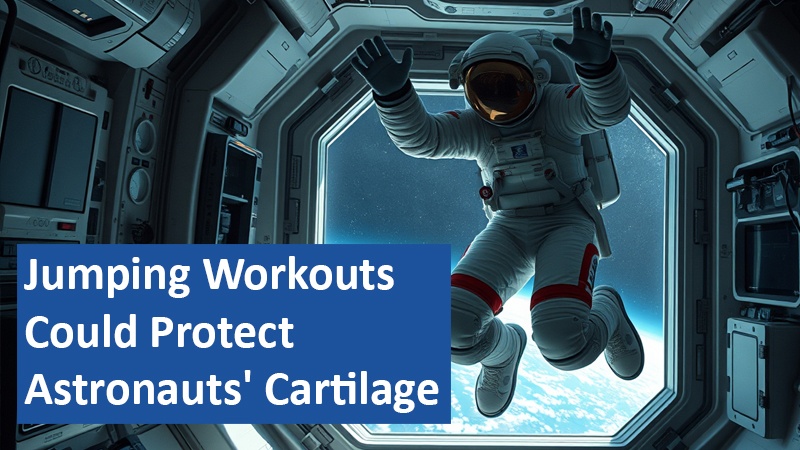
A new Johns Hopkins University study offers a promising solution for safeguarding astronauts’ musculoskeletal health during long-duration space missions. The research suggests that incorporating jumping workouts into astronauts’ training regimens could effectively combat cartilage damage, a significant concern for those venturing to Mars and the Moon.
######################################################
Now exclusively try Amazon Prime and Prime Video free for 30 days!
##########################################################
The Perils of Microgravity: A Threat to Cartilage
Extended exposure to microgravity presents numerous challenges to astronauts’ physical well-being. The absence of Earth’s gravitational pull leads to muscle atrophy, bone density loss, and, crucially, cartilage degradation. These effects can severely compromise astronauts’ ability to perform essential tasks, from conducting spacewalks to operating equipment, hindering mission success and jeopardizing their long-term health.
Jumping: A Countermeasure for Cartilage Degradation
Published in the esteemed journal “npj Microgravity,” the Johns Hopkins study sheds light on the potential benefits of jumping exercises in mitigating cartilage damage. The research team conducted experiments on mice, simulating the effects of spaceflight through hindlimb suspension. The findings revealed that mice engaged in jump training exhibited thicker, healthier cartilage in their knees compared to their sedentary counterparts, suggesting a protective effect against the detrimental impacts of microgravity.
Paving the Way for Long-Duration Space Exploration
“As humanity sets its sights on establishing permanent bases on the Moon and embarking on ambitious journeys to Mars, safeguarding astronauts’ musculoskeletal health becomes paramount,” emphasizes lead study author Marco Chiaberge. “Our research underscores the potential of jumping exercises as a preventive strategy to combat cartilage damage, enabling astronauts to maintain optimal physical function throughout their missions.”
A Potential Boon for Earthbound Arthritis Sufferers
Beyond its implications for space exploration, the study’s findings could also offer hope for individuals grappling with arthritis on Earth. By demonstrating the ability of jumping exercises to stimulate cartilage regeneration, the research opens new avenues for potential therapies aimed at slowing the progression of this debilitating joint disease.
Future Directions: Optimizing Exercise Protocols
While the study’s results are encouraging, further research is warranted to refine exercise protocols and determine the optimal intensity, duration, and frequency of jumping workouts for both astronauts and arthritis patients. Factors such as individual fitness levels, pre-existing conditions, and mission-specific requirements should be considered when designing personalized exercise programs.
This study not only provides valuable insights into the physiological effects of spaceflight but also highlights the importance of exercise as a countermeasure for mitigating the negative impacts of microgravity on astronauts’ musculoskeletal health. As we push the boundaries of human exploration, innovations like these will be crucial in ensuring the well-being and success of those who venture into the cosmos.
How can these findings be translated into practical exercise programs for astronauts preparing for long-duration missions? And what other innovative approaches might hold promise for protecting astronauts’ cartilage in the challenging environment of space?
Based on content from www.sciencedaily.com and own research.